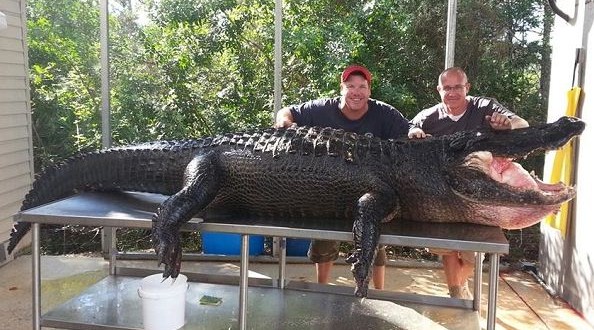Florida – Two men said they captured and killed a 13-foot gator they had been trying to catch for months.
The 765-pound alligator Keith Kelley and Kelly Sziy nicknamed “Lumpy” was caught on the St. Johns River.
Florida Fish and Wildlife is still working to figure out if this is the largest gator in the state to be killed by hand.
For the past several months, Keith Kelley and Kelly Sziy have been scouting that particular gator — who they nicknamed “Lumpy.” They caught him off guard shortly after sunrise in only 4 to 5 feet of St. Johns River water. Even more surprising — the pair had just a rope, a few hooks and their strength.
“Put some leather gloves on and I told Kelly: we’re going to have to get him by hand and that’s all it is to it. Hang on,” Kelly continued.
Four hours later, “Lumpy” was brought in and weighed. He was so heavy, he broke the scale. Specialists at the Alligator Farm say they don’t see those kinds of catches very often.
“Usually when people say they’ve seen a large alligator, it’s usually around 11 feet or so. So, 13 feet, close to 13 1/2 feet is definitely rare,” Jim Barlington, curator of reptiles, said.
Ultimately, “Lumpy” was killed and used for processed meat. His head will be mounted on Kelley’s wall. He says he’s already looking ahead to the next big catch.
“I don’t know if there’s another one out there, but we’ll definitely be looking.”
Agencies/Canadajournal
 Canada Journal – News of the World Articles and videos to bring you the biggest Canadian news stories from across the country every day
Canada Journal – News of the World Articles and videos to bring you the biggest Canadian news stories from across the country every day



